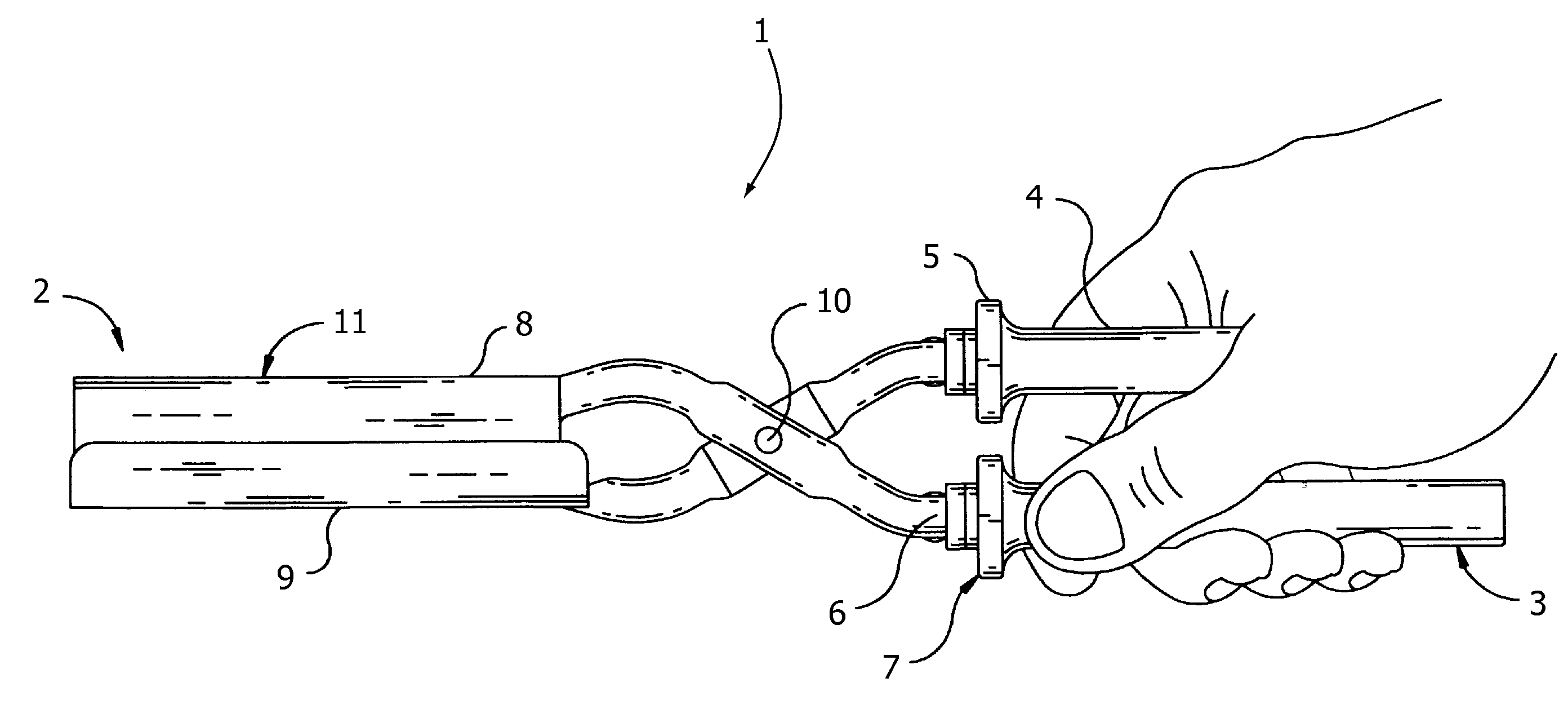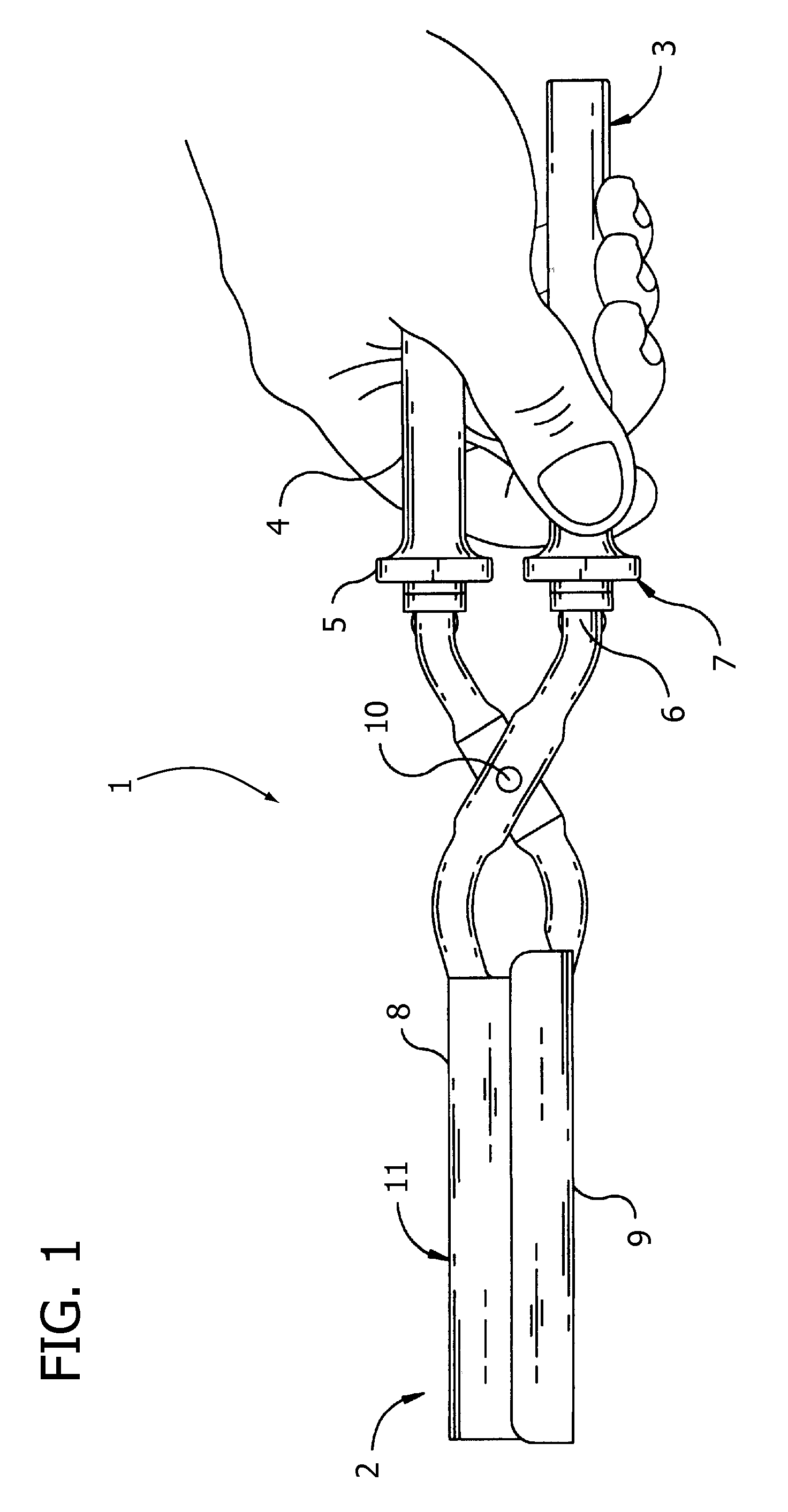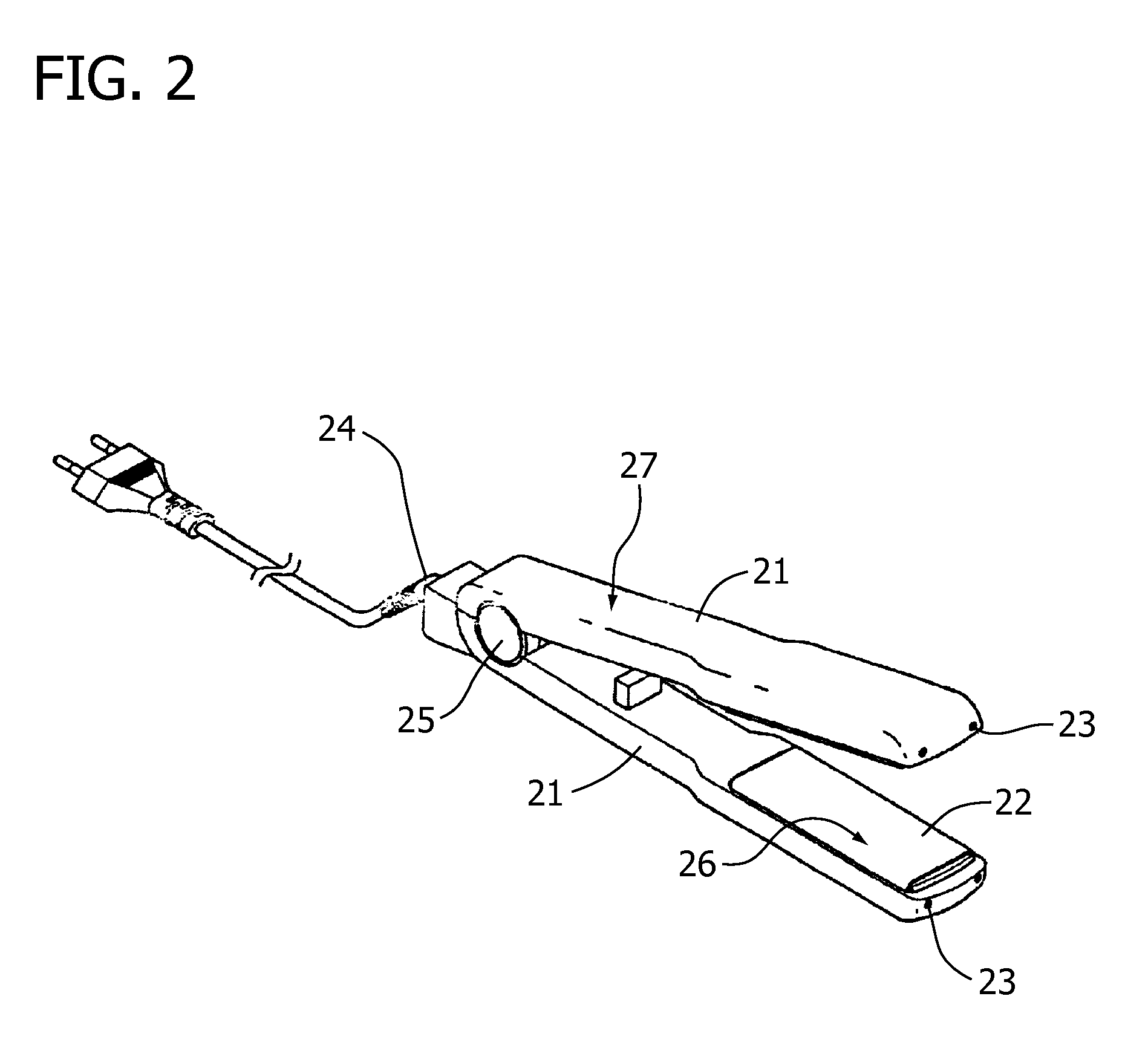Silicone and siloxane-based impregnated coating and polymeric materials for conditioning
a technology of siloxane and impurities, applied in the field of personal care devices, can solve the problems of difficult separation of conditioning agents from mixtures, build-up of undesirable effects, heavy, oily feel on contact surfaces,
- Summary
- Abstract
- Description
- Claims
- Application Information
AI Technical Summary
Problems solved by technology
Method used
Image
Examples
example 1
Conditioning Release of PDMS onto Hair
[0082]The following example illustrates the release of a conditioning agent (e.g., PDMS) from an immiscible composition contained on a personal care device into a contact surface (hair).
[0083]The immiscible composition discussed above comprising a hydrophobic conditioning agent and a hydrophilic polymeric material was extruded into three personal care devices. More particularly, the devices were hair styling devices, and, specifically, the hair styling devices were brushes.
[0084]The three brushes contained PDMS as the conditioning agent in the immiscible composition. One brush, which was new, was life-tested for 10,000 strokes using means generally available in the art, a second brush, which was also new, was life-tested for 30 strokes using means generally available in the art, and a third brush was environmentally conditioned without stroking a reference hair sample. As used herein, the term “stroke” requires the device to travel a minimum of ...
example 2
Conditioning Release of PDMS onto Hair from Device Plate
[0095]The following example illustrates the analysis of a panel of a personal care device coated with the immiscible composition discussed herein.
[0096]The immiscible composition discussed above comprising a hydrophobic conditioning agent and a hydrophilic polymeric material was coated onto a panel of a personal care device. More particularly, the personal care device was a hair straightener.
[0097]The coated panel was placed into a laboratory oven set at 200° C. and allowed to acclimatize for several minutes. A reference hair sample was then utilized to directly wipe the surface of the coated panel of the device. FTIR analysis of the hair following the wipe resulted in the FTIR spectra shown in FIGS. 6A-6C.
[0098]Specifically, FIG. 6A provides the spectrum results for the surface of the coated panel. FIG. 6B provides the spectrum results for the reference hair sample that was wiped across the surface of the coated panel. FIG. 6C...
PUM
| Property | Measurement | Unit |
|---|---|---|
| Percent by mass | aaaaa | aaaaa |
| Percent by mass | aaaaa | aaaaa |
| Percent by mass | aaaaa | aaaaa |
Abstract
Description
Claims
Application Information
 Login to View More
Login to View More - R&D
- Intellectual Property
- Life Sciences
- Materials
- Tech Scout
- Unparalleled Data Quality
- Higher Quality Content
- 60% Fewer Hallucinations
Browse by: Latest US Patents, China's latest patents, Technical Efficacy Thesaurus, Application Domain, Technology Topic, Popular Technical Reports.
© 2025 PatSnap. All rights reserved.Legal|Privacy policy|Modern Slavery Act Transparency Statement|Sitemap|About US| Contact US: help@patsnap.com



